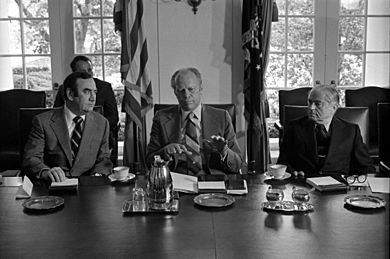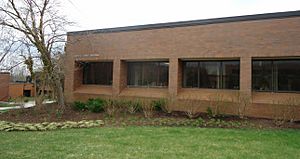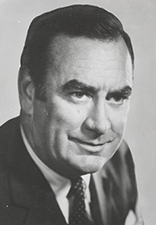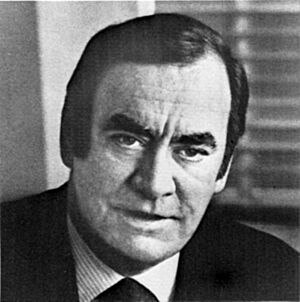Hugh Carey facts for kids
Quick facts for kids
Hugh Carey
|
|
|---|---|
 |
|
| 51st Governor of New York | |
| In office January 1, 1975 – December 31, 1982 |
|
| Lieutenant |
|
| Preceded by | Malcolm Wilson |
| Succeeded by | Mario Cuomo |
| Member of the U.S. House of Representatives from New York |
|
| In office January 3, 1961 – December 31, 1974 |
|
| Preceded by | Francis E. Dorn |
| Succeeded by | Leo C. Zeferetti |
| Constituency | 12th district (1961–1963) 15th district (1963–1974) |
| Personal details | |
| Born |
Hugh Leo Carey
April 11, 1919 New York City, U.S. |
| Died | August 7, 2011 (aged 92) Shelter Island, New York, U.S. |
| Resting place | Our Lady of the Isle Cemetery Dering Harbor, New York, U.S. |
| Political party | Democratic |
| Spouses |
Helen Owen
(m. 1947; died 1974)Evangeline Gouletas
(m. 1981; div. 1989) |
| Children | 14, including Paul |
| Relatives | Edward M. Carey (brother) Martin T. Carey (brother) |
| Education | St. John's University (BA, JD) |
| Profession | Lawyer |
| Military service | |
| Allegiance | |
| Branch/service |
|
| Years of service | 1939–1946 |
| Rank | |
| Unit | 101st Cavalry Regiment 415 Infantry Regiment 104th Infantry Division |
| Battles/wars | World War II • European Theatre |
| Awards | |
Hugh Leo Carey (born April 11, 1919 – died August 7, 2011) was an American politician and lawyer. He served as a U.S. Representative for seven terms, from 1961 to 1974. Later, he became the 51st Governor of New York, serving from 1975 to 1982. He was a member of the Democratic Party.
Contents
Early Life and Military Service
Hugh Carey was born in New York City. His parents were Margaret and Dennis Joseph Carey. He had brothers, including Edward M. Carey and Martin T. Carey.
Education and World War II
In 1939, Hugh Carey joined the New York Army National Guard. He later became a major in the 104th Infantry Division, known as the "Timberwolves." He fought in the European Theater during World War II. His service included battles in Northern France, Holland, and Germany.
Carey received several awards for his bravery. These included the Combat Infantryman Badge, the Bronze Star Medal, and the Croix de Guerre with Silver Star. He left the military in 1946 as a colonel.
After the war, he earned his college degree from St. John's University in 1942. He then studied law at St. John's University's law school, getting his law degree in 1951. He became a lawyer in New York that same year.
Political Career
Hugh Carey was a partner in a law firm before entering politics.
Serving in Congress
In 1960, Carey was elected to the United States House of Representatives. He represented parts of New York for seven terms. During his time in Congress, he saw many changes in his district.
Carey was a strong supporter of education. In 1966, he led efforts to create a program that gave money to states. This money helped states start or improve education for children with disabilities. This important law became known as the "Carey Bill." It helped create a new office for special education and an advisory committee. This bill was a big step towards ensuring all children, including those with disabilities, received a good education.
He also worked on the House Ways and Means Committee. This committee handles important financial laws. He helped pass the first federal aid program for education. He left Congress on December 31, 1974, after being elected Governor of New York.
Running for Mayor
In 1969, Carey briefly ran for the Democratic nomination for Mayor of New York City. He later decided to run for City Council President. He narrowly lost that election.
Governor of New York
In 1974, Hugh Carey became New York's first Democratic governor in 16 years. He won the election after a period of political change in the country.
Carey is well-known for helping New York City during a tough financial crisis in the mid-1970s. The city was almost out of money. Governor Carey brought together business leaders and workers to find solutions. He helped save New York City from bankruptcy.
As governor, he worked to control state spending. He also cut taxes to encourage businesses to invest in New York. His administration helped build important places like the Jacob K. Javits Convention Center and Battery Park City. He also supported the building of the Carrier Dome at Syracuse University.

Carey signed a special agreement called the Willowbrook Consent Decree. This agreement helped improve the lives of people with mental and developmental disabilities. It moved many people from large institutions into community programs. He also focused on environmental issues. He addressed problems like the Love Canal disaster area, which was a serious environmental concern.
Carey also worked with other Irish-American politicians, including Senators Edward Kennedy and Daniel Patrick Moynihan. They were called "The Four Horsemen." They worked together to help bring peace to Northern Ireland.
Carey considered running for president in 1976 and 1980. In 1978, he was re-elected as governor. He was the first Democrat to be re-elected in 40 years. He decided not to seek a third term in 1982. His lieutenant governor, Mario Cuomo, took over as governor in 1983.
Later Years
After leaving the governor's office, Carey returned to practicing law. He continued to be involved in legal work and served on various boards.
Personal Life
In 1947, Hugh Carey married Helen Owen. They had 14 children together. Sadly, Helen passed away in 1974. Two of their sons also died in a car accident in 1969. Their son Paul, who worked for President Bill Clinton, passed away in 2001.
In 1981, Carey married Evangeline Gouletas. This marriage ended in divorce in 1989.
Hugh Carey passed away on August 7, 2011, at the age of 92. He was at his summer home in Shelter Island, New York.
Legacy

Hugh Carey is remembered for his important work in New York politics. In 2009, he received the Citizen Laureate Award from the University at Albany Foundation. In 2012, the Brooklyn Battery Tunnel was officially renamed the "Hugh L. Carey Tunnel" in his honor. Building 14 at the Rochester Institute of Technology was also named after him in 1984.
|



